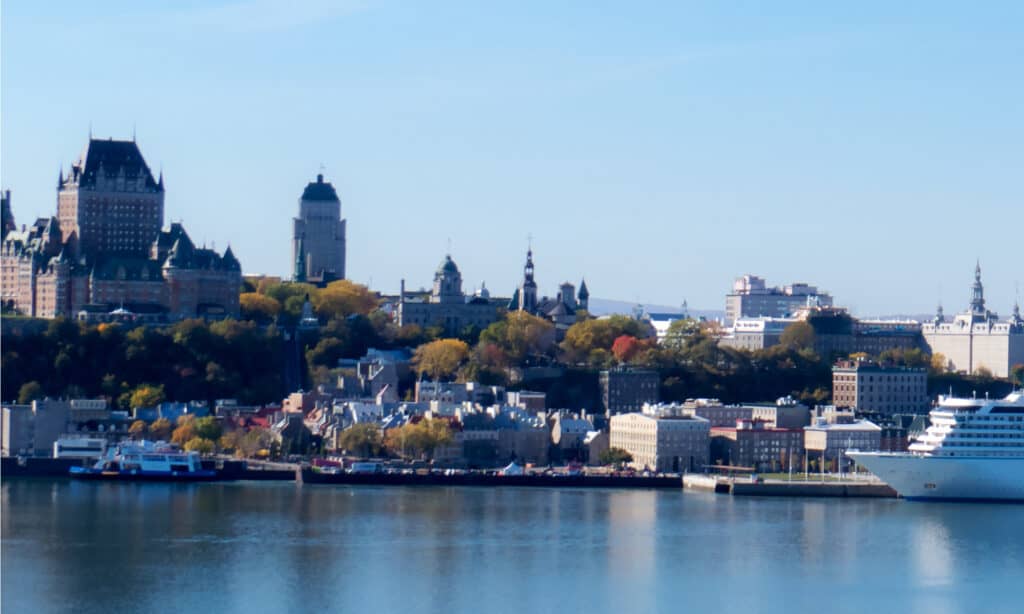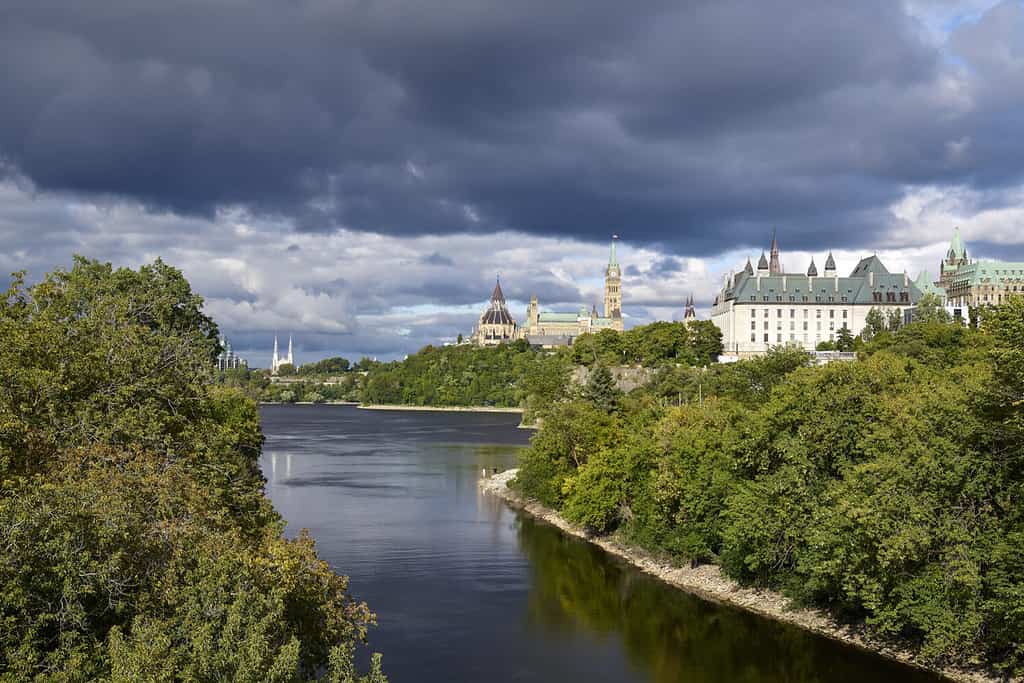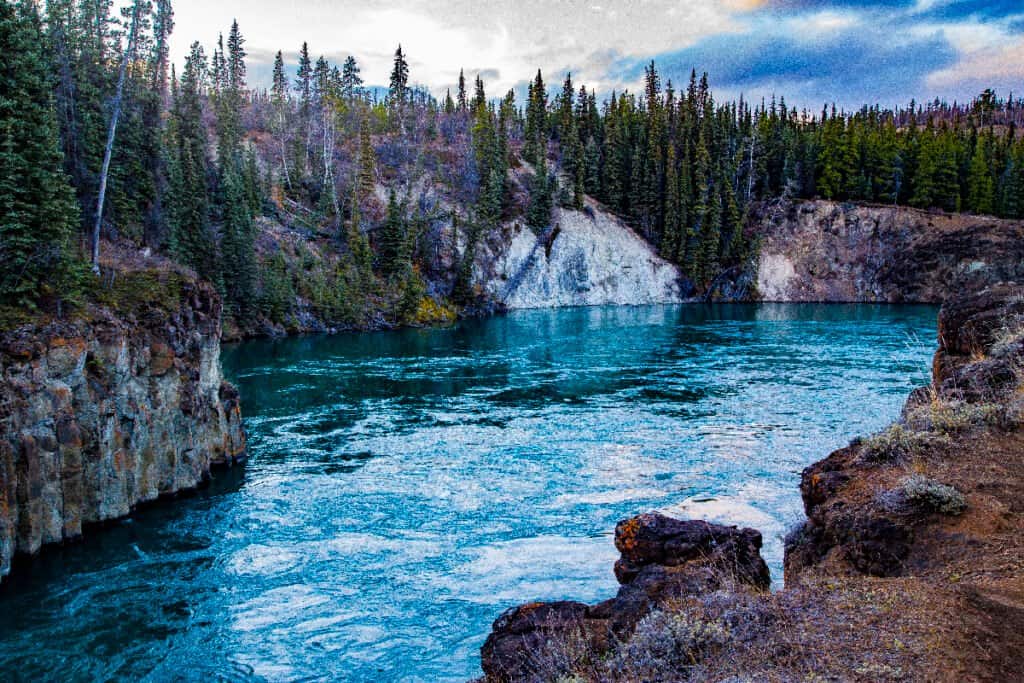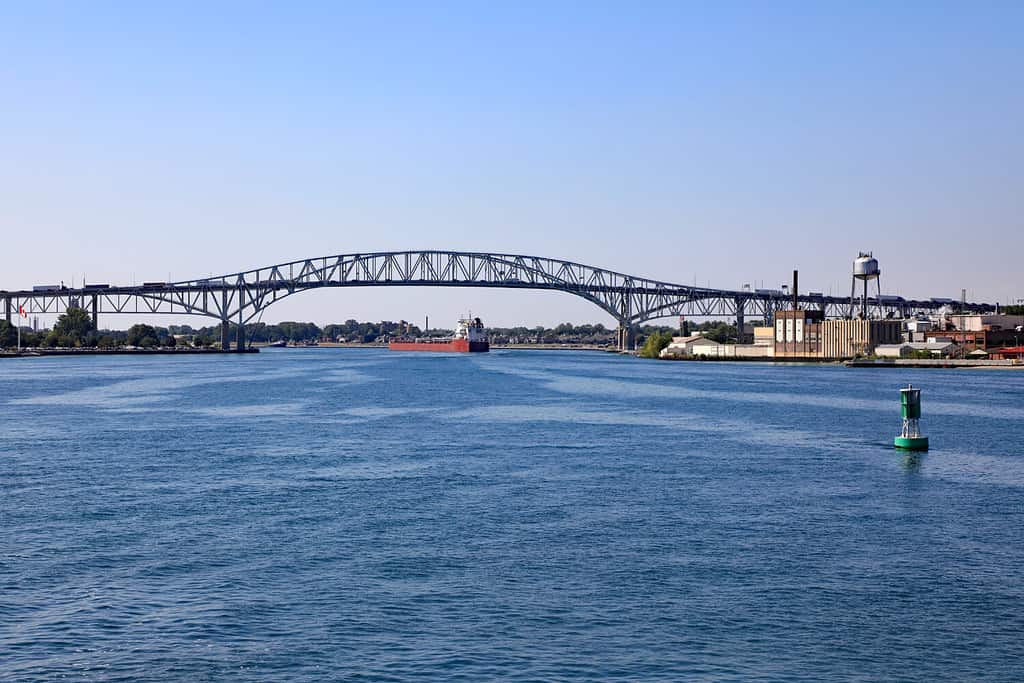Northern Canada remains known for its frigid temperatures — but more than just the Yukon, Nunavut, and the Northwest Territories have layers of ice and snow. Year-round, rivers across Canada have dastardly cold temperatures that will chill you to your core.
Keep reading to discover the 10 coldest rivers in the Great White North.
Saint-Lawrence River, Quebec and Ontario

The Saint Lawrence River runs next to Quebec City, one of the major cities located on its shores.
©bulbspark/Shutterstock.com
The Saint-Lawerence River serves as a border between America and Canada and never freezes completely. However, it is covered with snow and ice at least in part for most of the winter, making it one of the coldest rivers in Canada. While specific data about the river’s temperature isn’t collected on a regular basis, some have measured the temperature of the river below the freezing point for most of the winter months.
Despite its frigid temperatures, the Saint-Lawrence River is home to over a dozen different whale species; many of which have endangered, vulnerable, or threatened populations.
White River, Ontario
Nestled in a town of the same name, the White River is a tributary of Lake Superior and also flows into Negwazu Lake.
The White River and its surrounding area have termed themselves the “Coldest Spot in Canada” for decades. While science deems it false (with the actual coldest spot in Canada is negative 81 degrees Fahrenheit in Snag, Yukon in 1947), the river runs the coldest of all flowing rivers in Canada. Temperatures often hover around negative 40 degrees Fahrenheit — and the only reason the river doesn’t freeze over is its fast-moving current.
Ottawa River, Ottawa

In the winter, ice plungers recut their dunking holes to make it into the Ottawa River.
©Light and Vision/Shutterstock.com
Fans of ice plunging will love the Ottawa River’s temperatures. Residents have even taken to cutting 15 to 20 inches of ice out of their “plunging holes” each morning to enjoy the frigid temperatures. Ottawa, as a province, does bring cold weather through most of the winter months — including freezing rains, record snowfall, and icy conditions. Air temperatures range between humid summers and cold winters.
Campbell River, British Columbia
Campbell River in British Columbia, regarded by some as the Salmon Capital of the World, proffers five different species of salmon swimming in the river. While the summer offers a fertile spawning ground for the rivers, winters are long, wet, and cold.
Overall, the temperatures in Campbell River for the winter months range between 28 and 35 degrees Fahrenheit. January also brings the most snow to Campbell River, with 12 to 15 centimeters of snow.
Yukon River, British Columbia and Yukon

The wild Yukon River has ranked as not only one of the coldest rivers but one of the coldest places on Earth.
©iStock.com/HeatherECampbell
The Yukon is notoriously cold — so cold, it was the coldest place on Earth for a few days in 2020. Its subarctic climate ensures that for most of the year, the Yukon River offers frigid temperatures to fishermen or adventurous ice plungers.
During deep freezes, the Yukon River reaches temperatures of negative 50 degrees Fahrenheit for seven months out of the year.
Mackenzie River, Northwest Territories and Yukon
The cold water springs and other tributaries that feed the Mackenzie River range between a balmy 48 to 53 degrees in September and continue to fall as the winter months rage on.
No matter the temperature of the river, however, a healthy population of bull trout spawn in the springs during spring and summer thaws.
St. Clair River, Ontario

The St. Clair River connects Ontario and Michigan during the summer but nearly freezes during winter, making it harder for ferries and ships to navigate the waterway.
©Thomas Barrat/Shutterstock.com
In January, the St. Clair River between Ontario and Michigan nearly freezes. Its temperature dips below freezing points for several days of the month, stranding the residents of the islands in the river.
Because the river has frozen more and more often in recent years, residents and locals know how to temper the weather with their lifestyle needs. Sandbags, as well as picks to break the ice, come in handy during the dangerously cold months on the banks of St. Clair.
Sainte-Anne River, Quebec
As a tributary of the Saint-Lawrence River, the Sainte-Anne River is well known for its ice-fishing spots. The sport is so well-known on the river that a small village populates the banks of the Sainte-Anne between December and February.
The Sainte-Anne has many tributaries both upstream and downstream, all of which carry an average temperature in January of 30 degrees or below until summer thaws in May.
Saint-Charles River, Quebec

The Saint-Charles River, another river that flows through Quebec City, also contributes to the Arkansas River in Colorado.
©iStock.com/Michael Dean Shelton
Finally, the Saint-Charles River in Quebec, which feeds into the Arkansas River, freezes between the seasons of December and March. Because it’s below freezing most of the year, Quebec has an ice circulation plan to ensure the main waterway of Quebec City doesn’t overflood the shores come spring.
Usually, the temperatures for the Saint-Charles River in Quebec range between 14 and 27 degrees Fahrenheit in December, getting colder in January and February before warming up again slightly in March.
Are You Cold Yet?
Amid the Great North, rivers freeze for most of the year. Their free-flowing waters move too slowly and don’t create enough friction to keep the water to a temperature above the freezing point, resulting in days, weeks, or months of freeze. Rivers, as well as canals, springs, and lakes like the Rideau Canal, freeze over for most of the winter months to form the basis for some of the best winter activities in Canada.
Now that you know the coldest rivers in Canada, are you going to add any of these chilling bodies of water to your travel list?
Thank you for reading! Have some feedback for us? Contact the AZ Animals editorial team.








